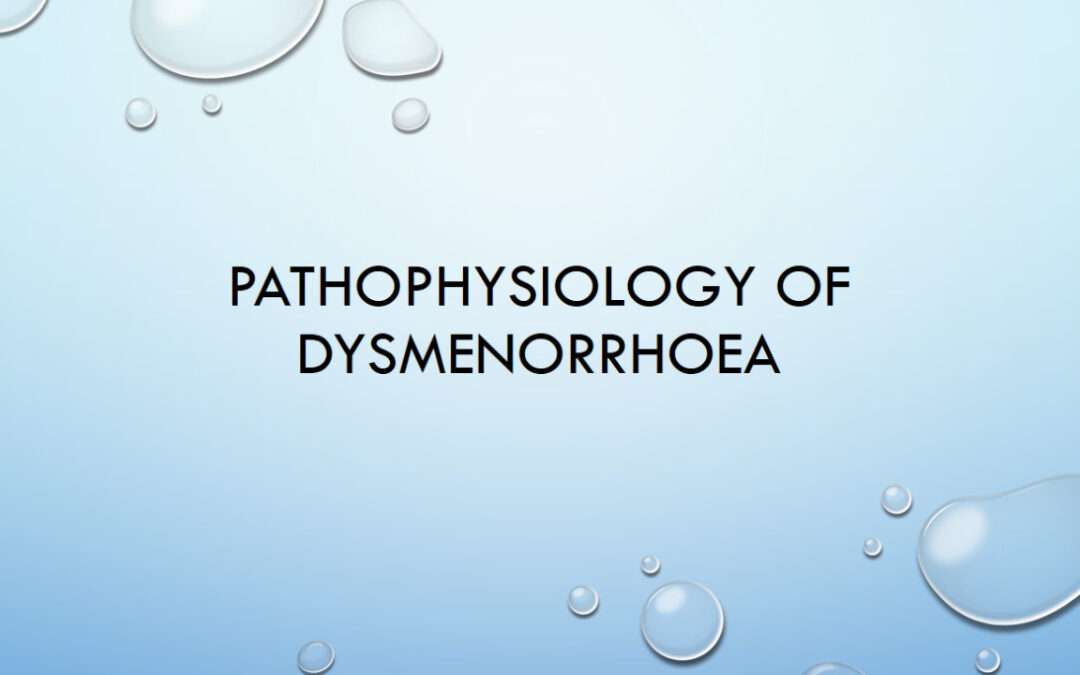Introduction-
It is defined as painful lower abdominal cramps or pain that occur with menstruation also known as ‘menstrual pain’ in common words, it is known as most common gynaecological problem in form of pelvic pain in women in their reproductive life.
Classification of dysmenorrhea with sign & symptoms –
It is broadly classified into two types –
1)Primary dysmenorrhea.
2)Secondary dysmenorrhea.
1)Primary dysmenorrhea–
It starts typically 6 to 12 months after menarche, with its maximum prevalence during late teens or early twenties till menopause (usually life-long). It is the pain with every menses without any pathology only related with ovulatory cycle. These are the abnormal contractions of the uterus due to a chemical imbalance in the body which causes pain, correlates with luteal progesterone and intrauterine generation of prostaglandins.
It is marked by onset before or during the menses and eases as the flow reduces. It may get better after first child birth but it is not always the case.
Sign & symptoms –
1)Pain typically lasts eight to 72 hours and usually occurs at the onset of menstrual flow.
2) Low back pain
3) Headache
4) Diarrhea
5) Fatigue
6)Nausea or vomiting.
All these symptoms other than pain are mainly associated symptoms which may vary for every woman.
2)Secondary dysmenorrhea–
When pain during menses is because of any underlying pathological cause then it is termed as secondary type after clinical confirmation. It usually starts after some years of menarche or later in life due to some medical conditions like PID (Pelvic inflammatory disease), endometriosis, etc.
Symptoms in this are almost same as primary type but their onset, severity and durations varies from it.
Differential diagnosis of primary dysmenorrhea is very necessary to determine the line of treatment which is done by taking past medical history and by other tests which includes-
1)Ultrasound.
2)MRI (Magnetic resonance imaging).
3) Laproscopy.
4) Hysteroscopy.
All these tests are used in order to confirm the differential diagnosis. Primary dysmenorrhea differential diagnosis are-
1)Endometriosis ( When tissue similar to endometrium is found in other parts of female reproductive organs or pelvic organs other than uterus. It often causes internal bleeding, infection, pelvic pain, etc).
2)Pelvic inflammatory disease (PID)
3)Uterine fibroids.
4)Abnormal pregnancy (miscarriage, ectopic).
5)Infection, tumors, or polyps in the pelvic cavity., etc.
Risk factors for dysmenorrhea-
Other than secondary dysmenorrhea where a pathological cause is involved for the pain, for primary type any woman can suffer from it but still women who are at higher risks can be categorised on the basis of past personal and medical history which includes-
1) Smoking habit.
2) Alcoholic and those drink even during their period which can aggravate the pain.
3) Overweight
4) History of early menarche.
5) Nulli- gravida women (never been pregnant).
Management –
It is decided on the basis of-
1)Age.
2)Overall health condition of the women.
3) Past medical history.
4)Extent of the condition (especially in case of secondary dysmenorrhea).
5) Type of dysmenorrhea (primary or secondary).
6) Tolerance or availability of specific medications, procedures, or therapies to the women.
7) Women preference or opinion along with the physician regarding overall condition is also important in management of dysmenorrhea.
Treatment involves the following-
1)In allopathic system of medicine it mainly consist of medication for prostaglandin inhibition known as ‘Prostaglandin inhibitor’, eg- NSAIDs such as aspirin and ibuprofen , etc. (main aim to reduce pain more effectively in sort time).
2) Oral contraceptives can be used in some cases (ovulation inhibitors).
3) Hormonal treatment is very beneficial in severe cases (progesterone).
4) Life style (be more physically active, regular exercise) and diet changes like include different types of protein in adequate amount and to cut off or limit the use of tea, coffee, etc. or any source of caffeine in diet.
5) Include Vitamin supplements (omega-3 fatty acids and vita- B) other than balanced diet regularly under supervision.
6) Hot fomentation across abdomen, hot bathing, massage, etc. during menses also helps in relieving the cramps.
7) In case of secondary dysmenorrhea if underlying cause is endometriosis, then endometrial ablation or resection procedure as per case is to carried out.
8) In severe cases with underlying cause of uterine fibroid, tumor, etc. in women with no need of pregnancy in future choice of ‘Hysterectomy’ is also present also in some cases.
Happy Learning
Contributor- Dr. Apurva Varangi




